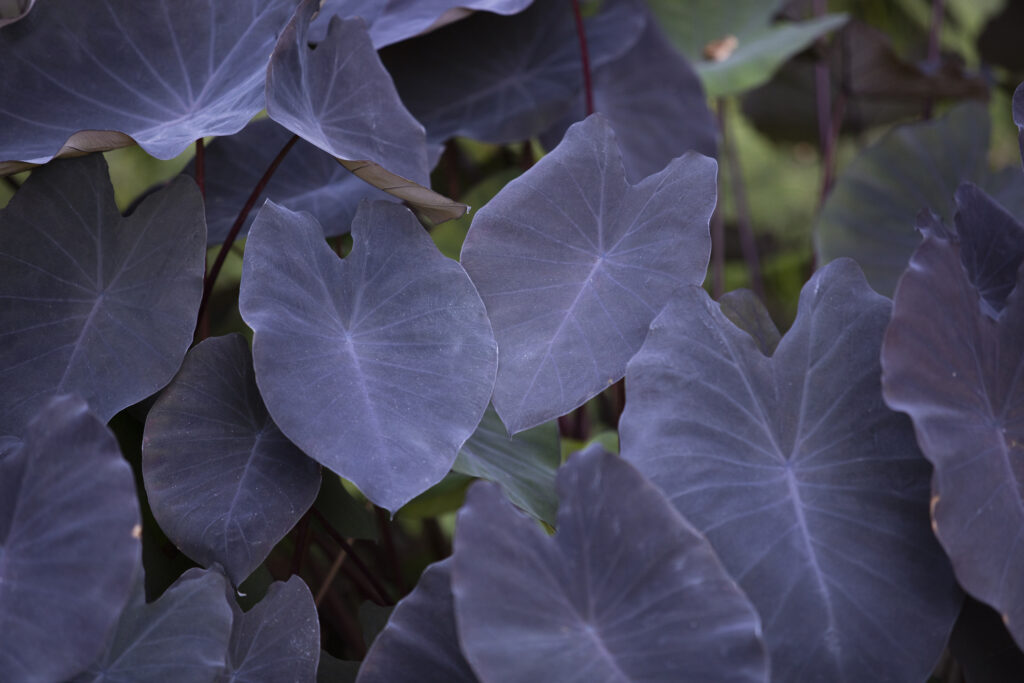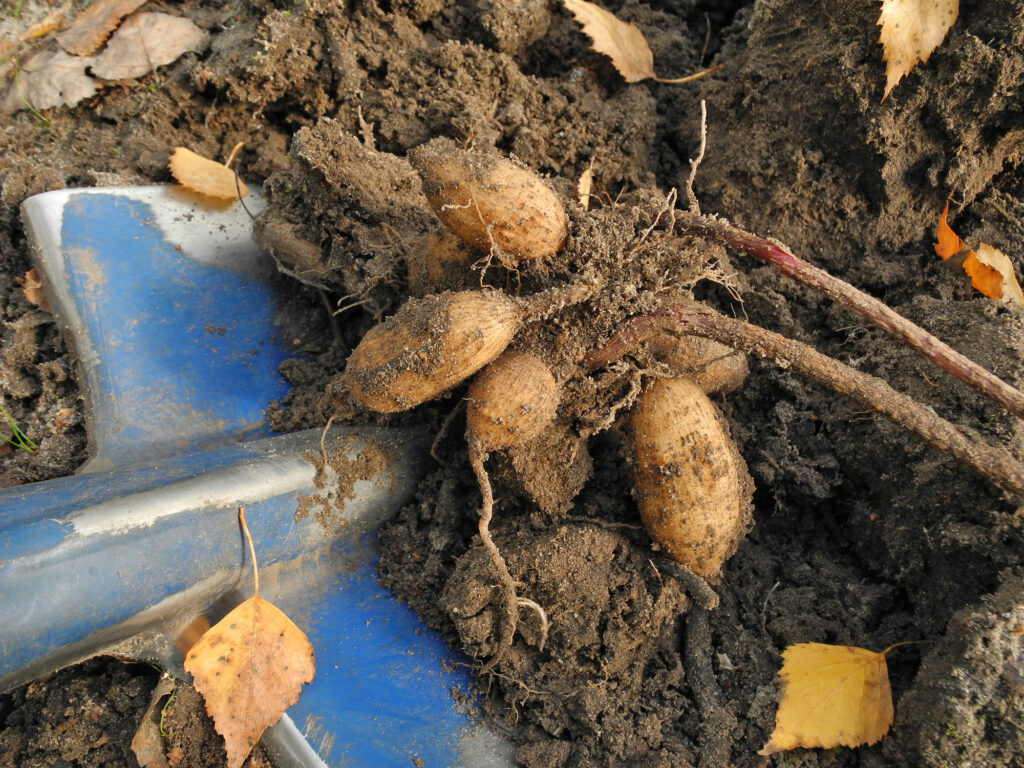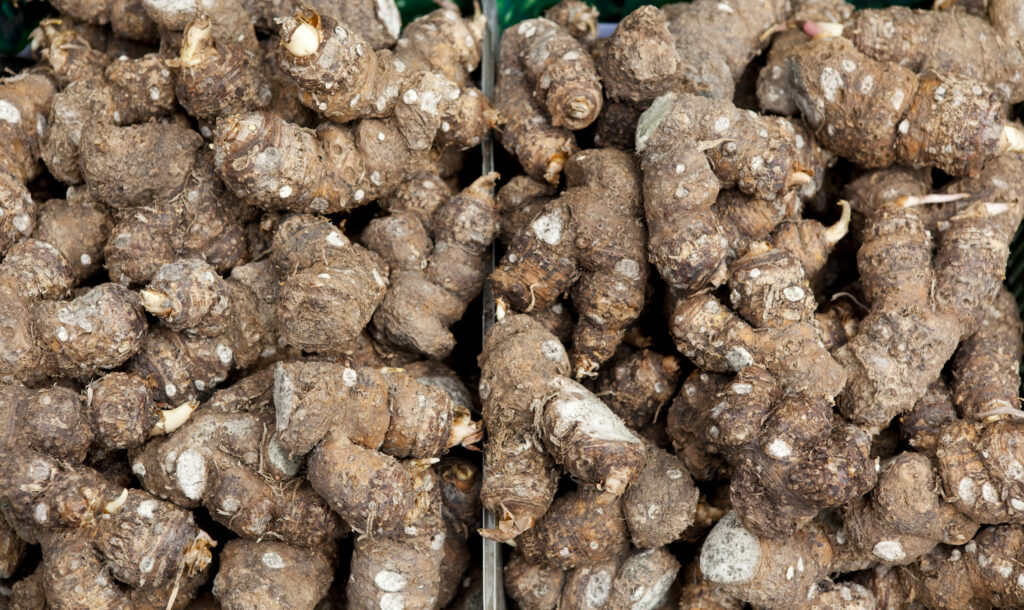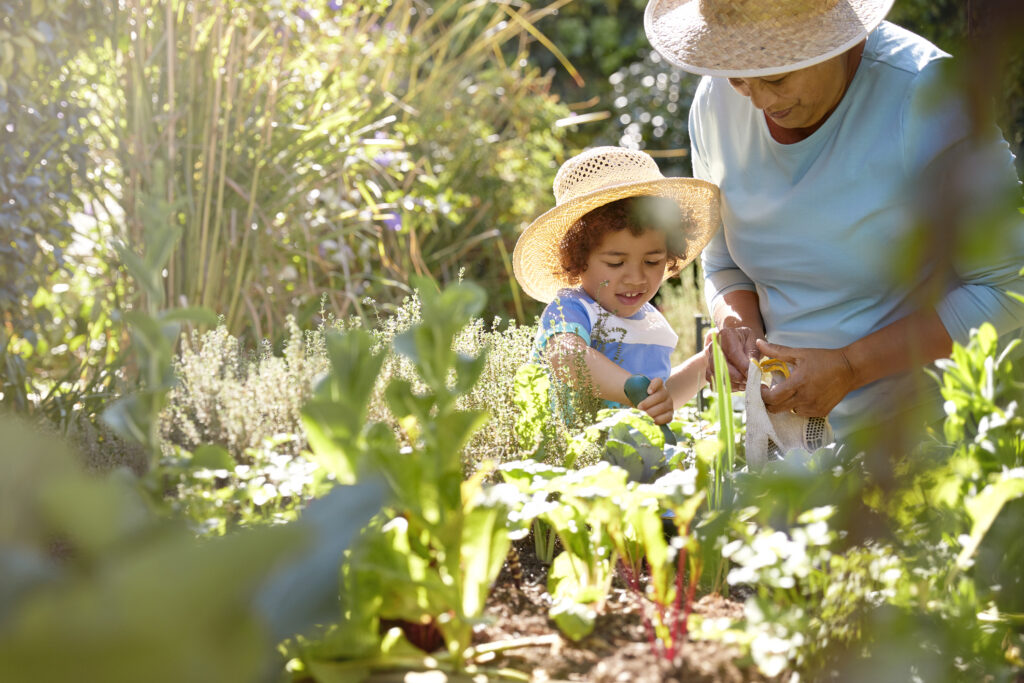
Not all plants that grow from bulbs, tubers, rhizomes, or corms are perennial in cold climates of the U.S. However, with a bit of effort and proper digging and storing procedures, these plants can be lifted and properly stored for winter to be planted out the next spring. Engaged gardeners in USDA zone 6 and colder, have been doing this for centuries. It is necessary for cold climates unless you choose to plant them as annuals.
Which Bulbs Should I Dig Up For Winter Storage?

- Alocasia & Colocasia – Elephant Ears
- Begonias, Tuberous
- Calla Lily
- Cannas
- Dahlia
- Gladiolus
The Importance Of Waiting For The First Frost

For most of these bulb-like plants, it is a waiting game. The first frosts of the fall season will melt the foliage down on these tropical or tender plants. Along with shortening day-length, frost is what forces these plants into dormancy. Cutting green, lively foliage off too soon will rob the bulb or tubers of necessary nutrients and energy, which weakens their growth for the next season.
How To Lift and Dig Up Bulbs

Once the foliage has yellowed and weakened from frost, it is time to cut off all the stalks and foliage down to just a few inches from the soil level. Try to pick a day to dig, when the garden soil is slightly moist but not soggy.
Using a fork or spade, you can now lift and dig up the root. Make sure to start digging far enough away from the base of the plant, so as to not damage or cut into the bulb or tuber. Slicing or skewering these tender bulbs is usually fatal to the plant.
By hand, carefully knock, shake, and rub off as much soil from the tubers as possible. It is advisable to not rinse or wash soil off the tubers with water. Dry conditions are what you are shooting for. Inspect bulbs and tubers that are dug for scars, slices, physical damage, or rot. If any tubers have soft or spongy spots, discard them. They will only rot further during storage.
Should I Air Dry My Bulbs?

Before bulbs, tubers or rhizomes can be stored for winter, they must be properly and thoroughly dried to prevent mold and rot. Find a warm, dry place out of direct sunlight to cure or harden off the tubers for a week to ten days. A garage, covered porch, or a basement workbench works well. We keep a couple of old summer window screens, set across two sawhorses for this drying period. A few layers of newsprint or brown grocery bags cut and laid out also work well.
Every few days, flip or tip the bulbs over to ensure all sides are drying adequately. While they are drying, you can rub and shake off any remaining residual dry soil. They do not need to be completely clean of soil, just not moist or wet.
Proper Storage For Tender Bulbs And Tubers

Once the tubers are fully dry, you can store them in open-topped cardboard boxes, crates, paper grocery bags, or fabric bags. Air circulation is important. Depending on how many you have, layer rhizomes between dry peat moss, sphagnum moss, or dry cedar chips like you would find in a pet shop for a hamster cage. Bulbs and tubers are usually fragile and should not rest on one another without some moisture-absorbing material between them. Even sheets of newspaper are a good bet. Larger tubers like Alocasia and Colocasia can be wrapped in paper as you would with fragile holiday decorations before they are boxed.
The storage area should maintain a consistent, cool temperature above freezing but not more than 50°F. The optimum temperature range is 40° to 45°F and is mostly dark. Inspect them a couple of times during the winter season to make sure the containers have enough humidity to keep them from drying out but not enough to cause molding and rot. If you find bulbs have become spongy feeling or have mushrooms growing, that is a bad sign! Cull those out and pitch them.
What To Do With Your Bulbs When Spring Arrives

As spring approaches, bring your bulbs and tubers into a warmer location but still maintain dark conditions and again check their condition. If they seem dry, mist or spritz with clean water over the top of them with a spray bottle. If you do this 2 to 3-weeks prior to planting them out, it will help rehydrate them and encourage eye or bud growth to develop. Timing is critical. Wait to start this process until garden soil has sufficiently warmed to 60°F. Remember, these are tropical-type plants and respond well to warm, sunny conditions, not cool damp ones.
Make no mistake, growing tropical plants in cold climates require the continuing efforts of gardeners who care a great deal about what they are cultivating. Growing any favorite plants, like Dahlias, Gladiolus, Tuberous Begonias or the much-maligned Canna Lily is an exercise of passion. Do not fear the potential struggle of digging and storing bulb-like plants, there is no reward grander than growing stunning beauties like these!
Other Recommended Reading

- Fall Bulb Planting Tips
- 9 New Bulbs To Plant In Fall – Best Bulbs For Spring Flowers
- An Easy Guide To Growing Amaryllis
- Create A Mardi Gras Themed Garden
At Jung Seed Co, we strive to be your go-to guide for all your gardening needs. Our YouTube channel Jung Garden Center now includes our new video series All Things Green where our experts provide gardening tips for all levels of gardeners. When you need reliable gardening advice, turn to the trusted experts at Jung.
View our new catalog online or browse our website for all of your gardening favorites. To receive info on new products, exclusive deals, and specials, be sure to sign up for our weekly email. Join our Facebook page, to discuss all things gardening!
